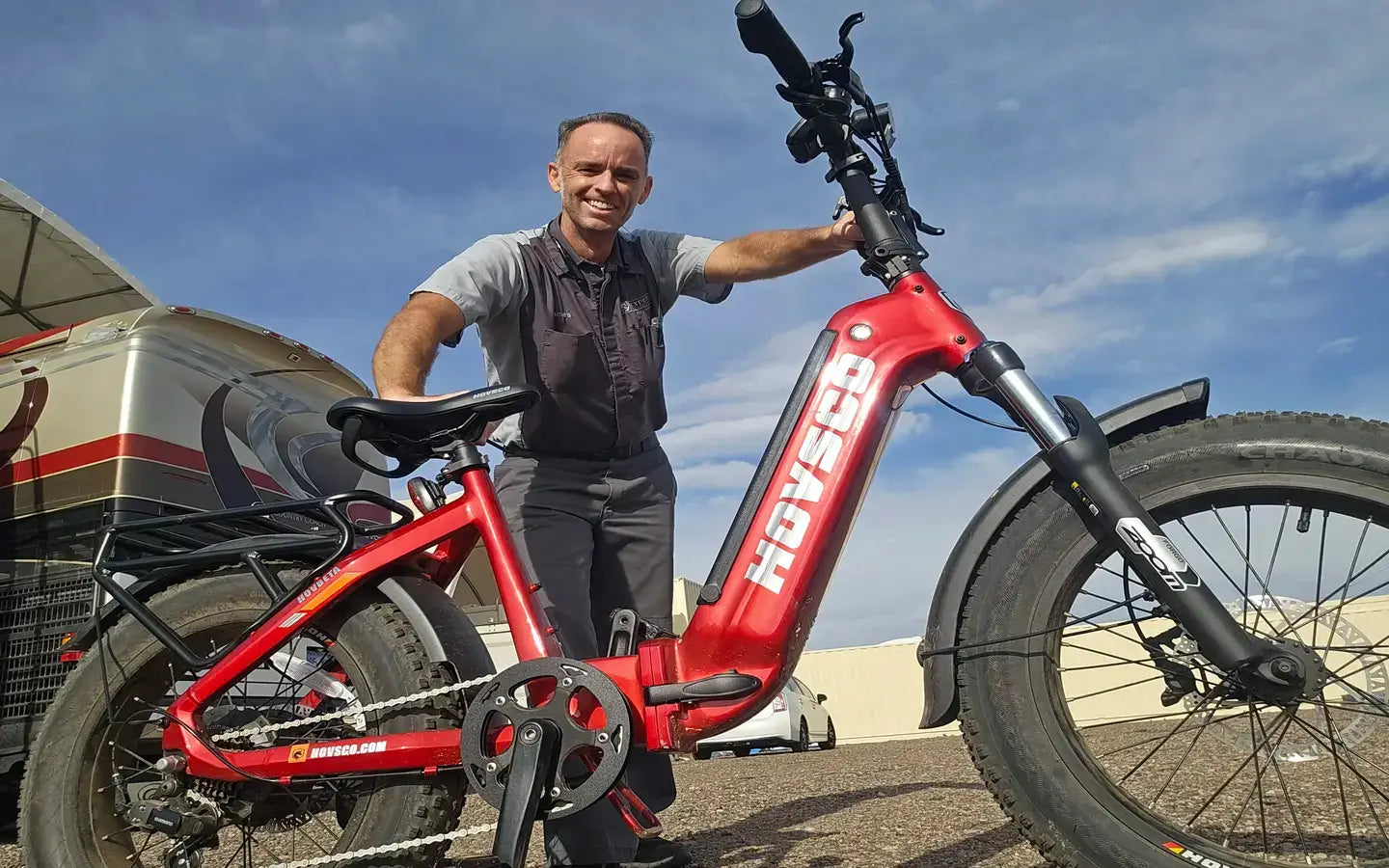
- by LiuJiazhu
What Are Electric Moped Safety Regulations and Riding Tips?
- by LiuJiazhu
Electric moped safety regulations mandate speed limits (≤50 km/h), power restrictions (400W-4kW), no passengers, proper licensing (F-class), registration, and helmets. Riding tips include regular maintenance, avoiding modifications, and obeying traffic laws to prevent fines/accidents.
Electric mopeds (e-mopeds) differ from e-bikes and motorcycles through speed caps (25-50 km/h), motor power (400W-4kW), and legal classification as light motorcycles. Unlike e-bikes, they require licenses and ban passengers.
E-mopeds occupy a middle ground between non-motorized e-bikes and high-speed e-motorcycles. Technically, e-mopeds must have a maximum design speed ≤50 km/h and motor power exceeding 400W but under 4kW, per national standards. Comparatively, e-bikes are capped at 25 km/h with ≤400W motors, while e-motorcycles exceed 50 km/h. Practically speaking, this classification dictates road access: e-mopeds can’t use bicycle lanes and require blue license plates.
Pro tip: Always check your vehicle’s factory specifications – aftermarket modifications to bypass speed limiters instantly reclassify e-mopeds as motorcycles, triggering stricter regulations. For example, a 45 km/h e-moped with removed speed restrictions becomes illegal without motorcycle certification.
| Feature | E-Bike | E-Moped |
|---|---|---|
| Max Speed | 25 km/h | 50 km/h |
| Motor Power | ≤400W | 400W-4kW |
| License Needed | No | F-class |
Riders must hold a Class F motorcycle license, obtainable via road law exams and driving tests. Unlicensed operation incurs ¥500 fines and potential 15-day detention.
China’s traffic laws categorize e-mopeds as light motorcycles, requiring specialized licensing. Applicants must be ≥18 years old, pass theoretical tests covering road signs and e-moped-specific rules, and demonstrate practical skills like emergency braking. Beyond legal compliance, proper training reduces accident risks – 73% of e-moped crashes involve unlicensed riders according to 2024 traffic reports. Pro tip: Renew your license every 6 years and carry it digitally via apps like Alipay for instant verification during police checks. Warning: Using a Class E (standard motorcycle) license for e-mopeds is illegal despite its broader permissions; always match license class to vehicle type.
Common penalties include $100-1,500 fines, license demerits, and vehicle impoundment for offenses like passenger carriage, missing plates, or drunk riding.
Recent enforcement prioritizes five key violations: 1) Unlicensed riding (¥500 + detention), 2) Carrying passengers (¥100), 3) Missing helmet (¥20 + 2 demerits), 4) Expired registration (¥200 + 3 demerits), and 5) Drunk driving (¥1,500 + 12 demerits). Since 2023, cameras with AI plate recognition automatically ticket unregistered e-mopeds in 12 pilot cities. A real-world example: In Shanghai’s 2024 crackdown, 32% of penalized riders were cited for passenger violations while transporting children. Practically speaking, even short “just around the block” trips require full compliance – 41% of fines occur within 1 km of riders’ homes.
| Violation | Fine | Demerits |
|---|---|---|
| No License | ¥500 | N/A |
| No Helmet | ¥20 | 2 |
| Drunk Riding | ¥1,500 | 12 |
Monthly checks of brakes, tires, and lights, plus biannual professional inspections, prevent mechanical failures. Never modify motors or remove speed governors.
E-moped maintenance focuses on three critical systems: 1) Hydraulic disc brakes (check fluid levels monthly; replace pads at 3mm thickness), 2) Tires (maintain 35-40 PSI; replace if tread <1.6mm), and 3) Batteries (avoid full discharges; store at 15-25°C). Technically, modified motors overheat 37% faster according to manufacturer stress tests, risking fires. Pro tip: Use manufacturer-approved parts – aftermarket “performance” brake pads often lack necessary heat dissipation for e-mopeds’ weight. For instance, a 2024 recall of third-party pads linked to 14 brake failures highlights this risk. But what happens if you ignore maintenance? A research study showed 68% of e-moped breakdowns involved neglected brake systems, frequently causing rear-end collisions.
All e-mopeds prohibit passengers regardless of age. This differs from e-bikes allowing one child under 12 with safety measures.
While e-bikes permit child passengers in urban areas, e-mopeds’ classification as motorcycles makes passenger carriage illegal nationwide. Enforcement intensified in 2024 after passenger-related crashes rose 22% year-over-year. Technically, e-mopeds lack passenger footrests or seatbelts, making even adult passengers unsafe. Pro tip: Parents transporting children must use e-bikes instead – a Guangzhou rider’s ¥300 fine for carrying a toddler on an e-moped underscores this rule’s strictness.
Warning: Attempting to install aftermarket seats or footrests invalidates insurance and adds ¥200 modification fines.
Riders must wear certified helmets (GB811-2010 standard) with fastened chin straps. Non-compliant helmets incur ¥20 fines.
China’s helmet regulations specify full-face designs with EPS foam liners for e-mopeds, unlike e-bikes allowing half-shell helmets. Since 2023, 12 provinces require helmet QR code verification to confirm certification. Practically speaking, a ¥50 uncertified helmet shatters at 30 km/h in crash tests, while GB811 helmets withstand 50 km/h impacts. Pro tip: Replace helmets every 3 years or after any impact – UV degradation weakens materials.
Real-world example: A Hangzhou rider survived a 40 km/h crash unscathed using a certified helmet, while another with a non-compliant model sustained severe head injuries at 25 km/h.
No, e-mopeds require a Class F motorcycle license. Car licenses (C-class) don’t cover two-wheeled motor vehicles.
Are speed governors removable for better performance?Removing governors is illegal and reclassifies the vehicle as a motorcycle, requiring new registration, insurance, and a Class E license.
Share:
Which Fat Tire Ebikes Top-Rate for Heavy Riders and Durability?
What Are The Top Electric Moped Models For 2025 Urban Commuting?